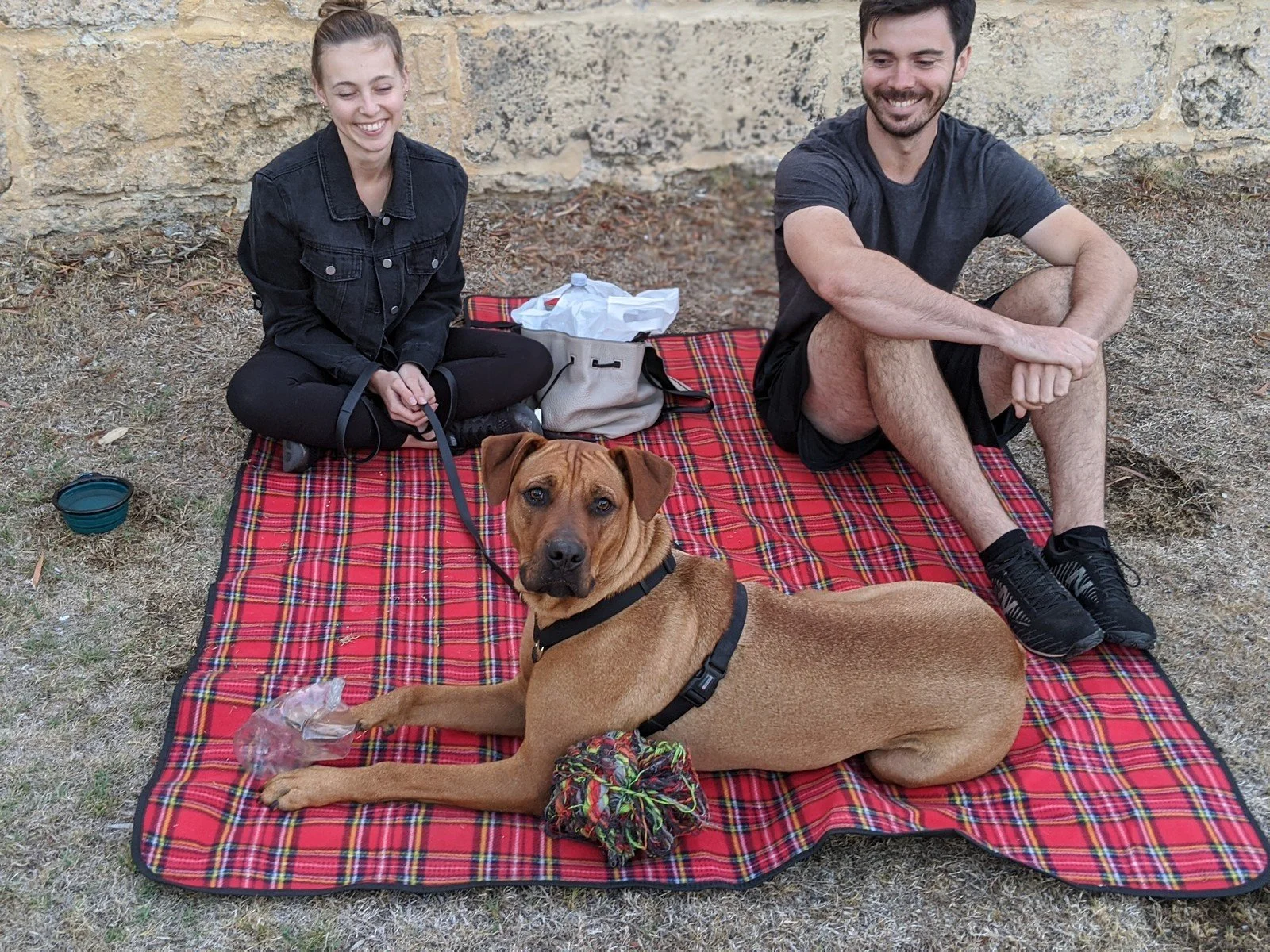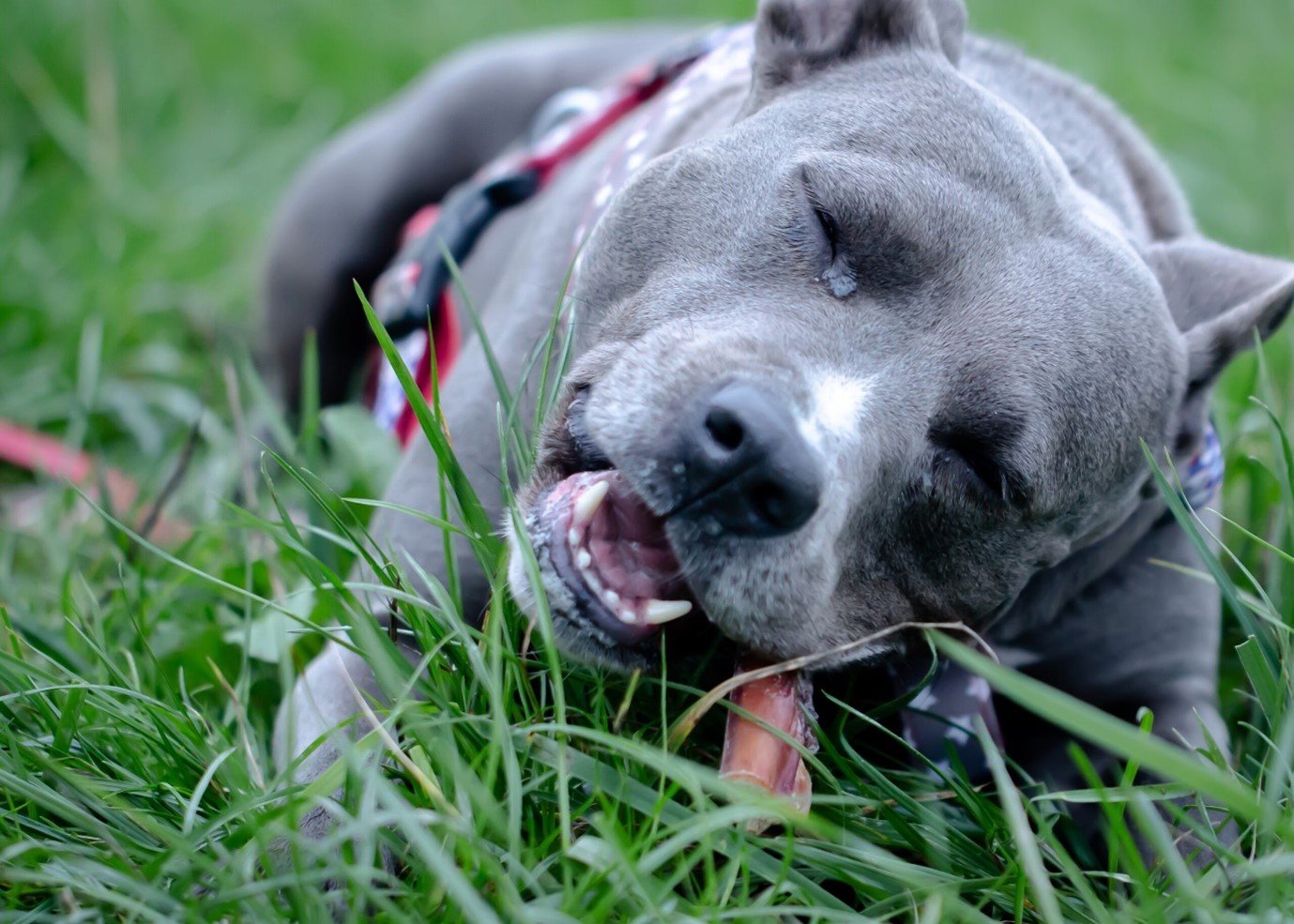What’s in your dog’s picnic basket?
In my last blog post, I introduced the #slowdogmovement. I explained that, like the other ‘slow’ movements, the focus is on ‘less is more’ in life. Take the time to give your dog a chance to sniff on their walk. Even if it’s for a shorter time. Then go on a bicycle ride by yourself, instead of ‘killing two birds with one stone’ by taking your dog along. It’s about knowing what’s right for your dog. We can also refer to what’s called the dog ‘ethogram.’ This is a scientific term for studying the most common canine behaviours.
Free ranging dogs are dogs that choose to live close to humans in an urban environment but who are not pet dogs. Scientists study free ranging dogs to take stock of these natural canine behaviours. It may be shocking to many people, that given the chance, these dogs prefer to be inactive for more than half of the day. They also scavenge, walk around, play, clean themselves and interact with humans. They rarely hunt! Dogs are social animals. Our own pet dogs prefer to be with us as much as possible while they sleep, rest, walk, scavenge and eat.
Most pet dogs like it when we sit down with them when they’re eating. It helps them to feel protected and safe. This can be especially helpful for dogs with separation anxiety. When you feed your dog at home, feed them first. Try and sit down when they’re eating or have your meal and feed them at the same time. Would you consider moving their eating area within sight of yours?
In my last post I suggested trying out slow walks with a harness and a long, loose leash with your dog. Allowing your dog to stop and sniff at every opportunity. This may not be the kind of walk you’re used to. Try and get your dog to walk instead of trot. Allow yourself to tune into the bird song around you, notice new Spring buds and anything else (your dog?) that can keep you in the present.
I recently learned about a creative way to combine enrichment for dogs with dog walking. It’s called the ‘Rucksack Walk’ and it was created by Steve Mann. You can try this very simplified version of the Rucksack Walk or you can follow Steve’s instructions to the letter! It’s up to you. Try this on whatever length of walk you choose. Just find a rucksack and place several objects in it that your dog hasn’t seen or sniffed before.
photo credit Michelle Dignam
Look for objects in the back of your closet or garage. Have a rustle in a ‘free’ pile next to the bins or choose object found in nature or a charity shop. You don’t have to spend a lot of time or money collecting items. Once you get the hang of it, you will find them everywhere! An old shoe, a feather, animal hair or wool (put in a mesh bag), a used book, a glove, an old hairbrush, a dog toy or a baby toy. You are only limited by your imagination!
Make sure that the items are safe and #slowdogmovement enough – no balls, sticks or frisbees. It’s best if they are not cleaned and still full of exciting human and animal smells. Also put an appropriate chew in the bag – like some dried tendon or organ meat. Place it in a plastic container so your dog won’t smell it easily. Make sure your dog isn’t hungry before you leave. Feed her/him before you leave or at least a couple of hours before your walk.
photo credit Alix Pilet
Stop during your walk, in a quiet spot, and sit down with your dog. Give your dog all the items in the bag, minus the chew, or save some items for another point in the walk or another walk time. If you’re into meditation or Mindfulness, savour the moment. If not, try and be silent and notice your breath, relax and enjoy bonding with your dog. Save the chew for a sitting down time at the very end of your walk or let it be the last item you give your dog from the rucksack. Bring a snack for yourself.
This simplified version of the Rucksack Walk is one way you can enrich your dog’s walk and your own experience. Make it interesting and social. You could even turn it into a picnic for you and your dog and bring along a full meal for both of you, and/or your family.
Treat searches are a simple way to add interest to a walk or to the day in general. Do them in your own garden halfway through the day or at any time. Start indoors. Get your dog’s attention by making a clicking or smacking sound with your mouth. Hold a few treats 5-10 in your hand – hold your hand up, about chest height. Make sure your dog is watching. Drop the treats in front of him from lower down (so they don’t scatter onto him or far away). Do this so he/she can see them drop on the ground. Let your dog eat the treats!
Try it again the next day by getting your dog’s attention. Scatter over a wider area. Keep doing this each day until your dog gets the idea. It won’t take long! Start doing the searches outside – in your garden or a quiet place in the park. Increase the difficulty of the searching terrain. Try using fallen leaves, taller grass or over a log and other branches in the park or woodland.
photo credit Michelle Dignam
Some people call treat searches, ‘Scatter Feeding’ but they are both the equivalent of providing small amounts of food for your dog to search for or ‘scavenge’. You can place the treats in a snuffle mat, in a baby pool full of balls, on some grass, on a hay bale, rolled up in a towel or dog paté smeared on a tree trunk – the only thing that limits you, is your imagination!
A caveat about adding treat searches and scatter feeding to your dog’s life. Make sure your dog is not hungry when you do this. It is frustrating for a hungry dog to search for his dinner. Or, to ask your dog to prise his/her main meal out of a food puzzle. Also, it’s normal for dogs to eat their main meal and snacks at a fast pace, without savouring each bite. Providing scavenging is not an effort to slow their eating down. If your dog has any issues with aggression and food, please seek the advice of a PDTE dog trainer before trying these ideas outside of your home.
Allowing your dog to scavenge is to respect the dog’s natural ethogram. It has many mental and health benefits. It can stimulate your dog’s brain and lower their heart rate. Searching for food can also give them confidence and boost their problem-solving skills. Sniffing and searching out a treat to chew produces Dopamine and provides low impact exercise. It’s also fun! Being present while they scavenge, strengthens your relationship with your dog.
Stay tuned to the Slow Dog Movement blog, ‘SLOW talk’ for more ideas. Join me in creating a sea change – an evolution revolution for dogs. Where ‘less is more’ and seeing things from a dog’s point of view makes life easier for you too!
Bibliography
Batson, Dr Amber, Canine Aggression Course, Durham 25-26 January 2020
Batson, Dr Amber, Reactive Dogs Course, Surrey, 9th April 2017.
Budzinsk, Cristina and Aurélien, At the Heart of the Walk (2019)
Grant, Kirsty, The Dog Nose, 7 Days of Enrichment (Online Course offered by All Dogs Are Good) January 2020
Grant, Kirsty, Canine Enrichment Course for Professionals, The Dog Nose, Swindon, 8 & 9th February 2020
Kelly, Shay, Scatter Feeding: Are you Killing Your Dog?, Blog post (2019)
Pangal, Sindhoor. A study on the activity budget of free ranging dogs. Blog
post (2019)
Rugaas, Turid et al, Lecture materials from International Dog Training Education, Bad Wimpfen, Germany. 2014-2015
Stewart, Theo ‘The Rucksack Walk’ (Steve Mann) https://dogidogblog.wordpress.com/2016/06/20/the-rucksack-walk/?fbclid=IwAR33qjSVbZIy_DgytY7RAkEAAdEUw8myWpz-iBFWmRSjaUjk-MpYR4MwT7g Blog Post, ‘Paws for Thought’ (June 2016)
Majumder, Sreejani & Chatterjee, Ankita & Bhadra, Anindita. (2014). A dog’s day with humans – time activity budget of free-ranging dogs in India. Current science. 106. 874-878.




